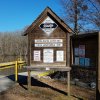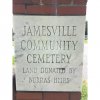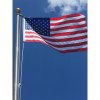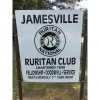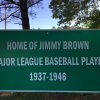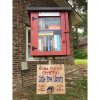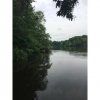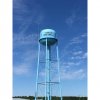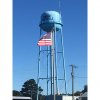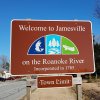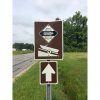History of Jamesville, North Carolina
The second oldest town in Martin County, Jamesville was incorporated in 1785 as James Town, with its name changing in 1797 to Jamestown and finally, on Feb. 10, 1855, to Jamesville.
Situated directly on the Roanoke River, Jamesville residents depended on the shipment of agricultural and forest products, supplying local farmers with merchandise, and taking advantage of the early springtime fishing season that was centered here.
Jamesville thrived prior to the Civil War with the formation of a large sawmill operation headed by Dennis Simmons. The construction of the Astoria Mill about a mile upriver gave the county its largest antebellum industry.
During the Civil War, Jamesville’s placement between Union headquarters at Plymouth, downriver to the east, and Williamston, Hamilton and Fort Branch, upriver to the west, put the town in constant peril. The town’s unenviable position placed it, as one local historian described, in “no man’s land” between opposing Union and Confederate interests. The once-prosperous town was virtually destroyed during the course of the war. As a result, the only surviving antebellum residence in town is the ca. 1810 Burras House on West Main Street.
Post war redevelopment followed improved transportation and continued exploitation of the vast forests in the region. While Simmons’ mill suffered devastating losses during the Civil War, it recovered nicely, rebuilt on a larger scale and operated until 1919. In 1889, it was touted as the largest manufacturer of wood shingles in North Carolina, producing about 25,000 a day.
Even more important was the incorporation in 1869 of the Jamesville and Washington Railroad (J&W) and Lumber Company. By 1870, the first segment of a narrow-gauge railroad extended into the company’s vast stands of timber south and east of Jamesville. Facetiously known as the “Jolt and Wiggle” for its uneven ride, the J&W made possible the expansion of large-scale timbering and small-scale farming into heretofore hinterlands in Jamesville and Griffins townships.
Furthermore, the county’s important fishing industry–including the famous “fishing machines”– was centered here, particularly in the spring when runs of herring brought hundreds to the Roanoke River to obtain a supply of fish to salt and preserve. The C.C. Fleming Fishery on Stewart Street was the most successful, and stands today as the only important structure associated with the fishing industry in Martin County. Jamesville currently has the only riverfront restaurants in Martin County. The Cypress Grill is open seasonally when the herring run (usually January through April). The other restaurant is River’s Edge.
The advantageous location of the original commercial district along Water Street near the river was lessened as travel relocated to the highways, and old commercial buildings were abandoned for new ones along what became US 64. In fact, only one survives on site— the 1914 (former) US Post Office The ca. 1900 general store of Henry Gray Griffin, located across the street from the old post office building, was demolished in 2003.
Info from Martin Architectural Heritage: The Historic Structures of Rural North Carolina County, edited by Thomas R. Butchko.
Click on an image below to view a larger version:

